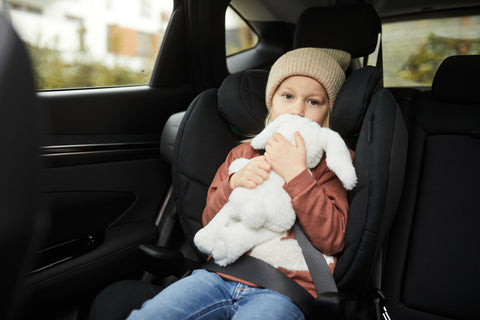Understanding the booster seat law is essential for parents and guardians to ensure their child's safety and comply with legal requirements. This article explains the UK’s booster seat regulations and offers guidance for parents on selecting and using the appropriate car seat for their children.
Overview of the Booster Seat Law
The UK booster seat law mandates that children must use an appropriate child car seat until they are either 135 cm tall or 12 years old, whichever comes first. Once they surpass these limits, they must use an adult seat belt. It’s crucial for parents to follow these rules to ensure the safety of their child and avoid penalties.
Types of Car Seats and Age Ranges
1. Rear-Facing Car Seats
Children should begin their car seat journey in a rear-facing seat. This is recommended from birth and should be continued until they reach the maximum weight or height allowed by the car seat’s manufacturer. Rear-facing seats offer better protection for the head, neck, and spine in case of an accident. It is now possible to get Extended Rear Facing Car Seats for children up to approximately 6 years old.
2. Forward-Facing Car Seats
Once a child outgrows the rear-facing seat, they can transition to a forward-facing car seat with a harness. These seats are suitable for children up to around 18 kg (typically up to 4 years old). A forward-facing car seat must be securely fitted and meet the appropriate regulations.
3. High-Backed Booster Seats
From about 4 years old, when a child exceeds 15 kg, they can use a high-backed booster seat. High-backed boosters are preferred as they provide better side-impact protection and help position the seat belt properly across the child’s body.
Booster Seat Regulations for Older Children
Booster seats are classified into:
- High-Backed Booster Seats: These seats offer extra head, neck, and side protection and are generally considered safer than backless boosters.
- Booster Cushions (Backless Booster Seats): These can be used once the child reaches 22 kg and is over 125 cm tall. However, using a high-backed booster is recommended for optimal safety, especially during long journeys.
Important Note: Changes implemented in 2017 prohibit the sale of new models of backless booster seats for children shorter than 125 cm or weighing less than 22 kg. Parents using existing backless models that comply with older regulations are not breaking the law, but it’s advisable to choose a high-backed booster for better protection.
Guidelines for Using Booster Seats Safely
- Ensure Proper Fit: The seat should be appropriate for your child's height and weight and fitted according to the manufacturer’s instructions.
- Positioning: The booster seat should elevate your child so that the vehicle’s seat belt fits snugly over the shoulder and across the chest, not the neck.
- Rear Seating: Children should always travel in the back seat for added safety.
Exceptions to the Booster Seat Law
There are a few specific exceptions to the booster seat law:
- Taxis and Private Hire Vehicles: If an appropriate child car seat is unavailable, children over 3 years old can travel using the adult seat belt.
- Unexpected Short Journeys: For unforeseen short distances, a child over 3 years can use the adult seat belt if a proper car seat is not available.
- Classic Cars: Vehicles without seat belts are an exception; children under 3 cannot be transported in such cars.
Penalties for Non-Compliance
Failing to comply with the booster seat law can result in a fine of up to £500. It is crucial to follow these regulations not only to avoid penalties but, most importantly, to ensure the safety of your child while traveling.
Final Thoughts
Understanding and following the booster seat law is vital for parents to keep their children safe on the road. Selecting the right car seat based on your child's weight and height, and ensuring it is properly fitted, can make a significant difference in protecting them during car journeys.







Comments (0)
There are no comments for this article. Be the first one to leave a message!